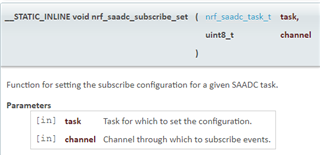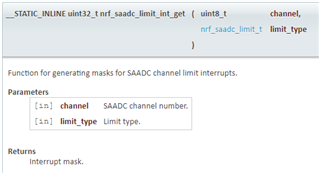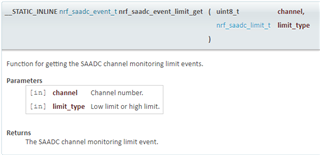i am working with nrf52832
i need to check 2 analog inputs and set my own v- (ref)
i can have value read every few seconds so no fast readings needs to be done
if i understand correctly i better use lpcomp if no fast readings is needed?
also, is it possible, and if there are some code examples, to be reading 2 analog inputs with 2 different v-- (references) (one for each input pin) ?
best regards
Ziv



